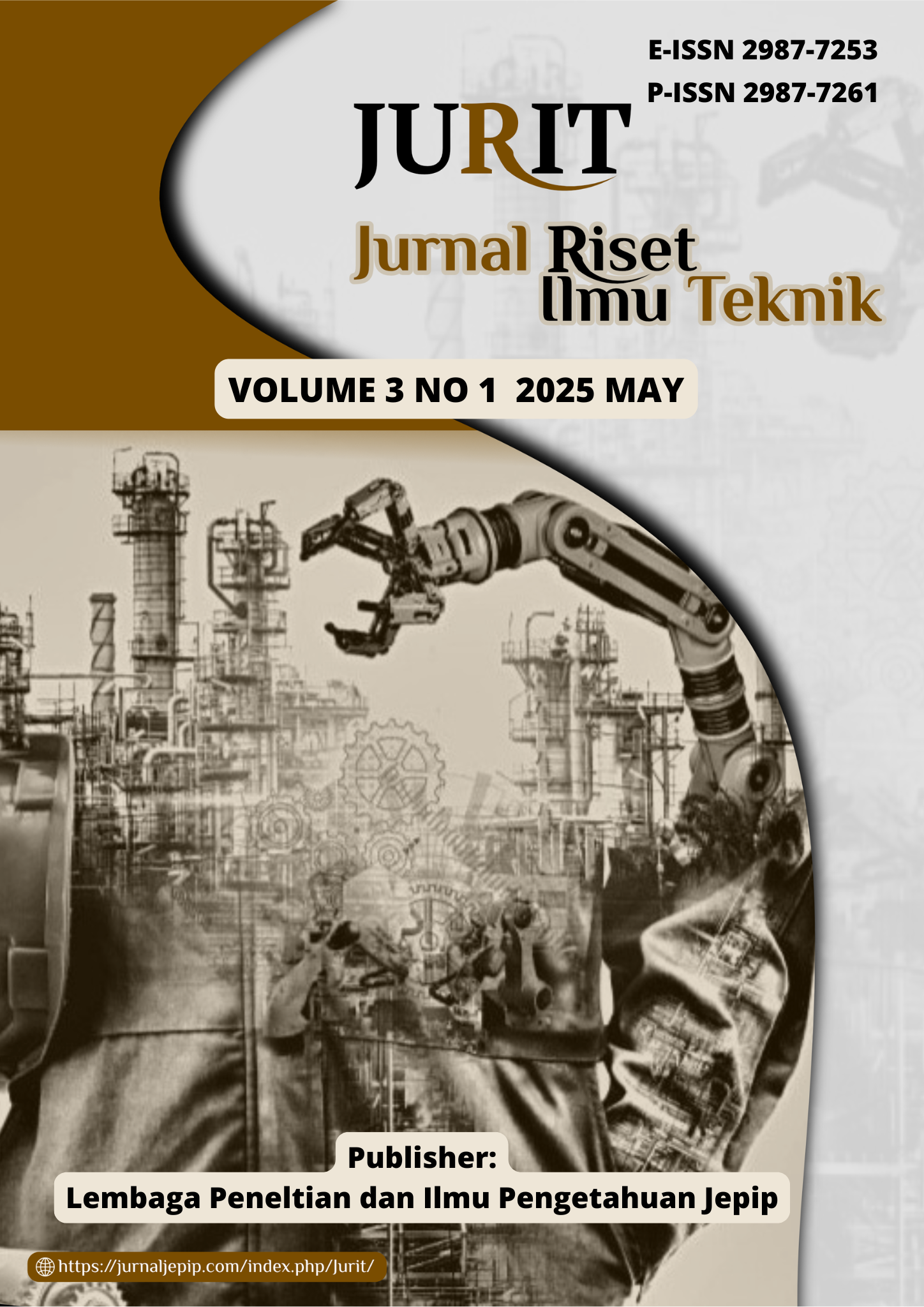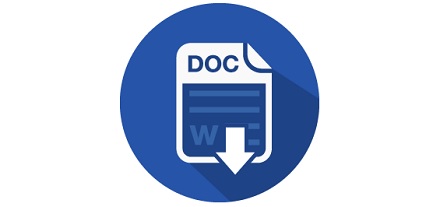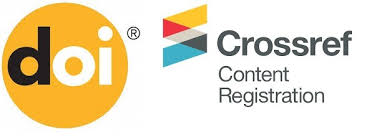Fuel Distribution Route Optimization Model Based On Hybrid Cheapest Insertion–Tabu Search
DOI:
https://doi.org/10.59976/jurit.v3i1.175Abstract
Purpose – This study aims to optimize the fuel distribution routes of PT Pertamina Patra Niaga Sei Siak by comparing the performance of the Cheapest Insertion Heuristic (CIH) and Tabu Search (TS) algorithms in minimizing total distance, travel time, and operational costs. Methodology– The research employs a quantitative–computational approach using operational data collected from real distribution activities in Pekanbaru, Riau Province. A Vehicle Routing Problem (VRP) model was developed with constraints on vehicle capacity, service time, and depot–station relations. CIH and TS algorithms were implemented using Python for comparative optimization. Validation was performed through correlation analysis between baseline and computational results. Findings – The results demonstrate that the Tabu Search algorithm significantly improved route efficiency, reducing total distance and travel time by 27.2% and 26.6% in Shift 2, and by 5.1% and 4.5% in Shift 1 compared to existing routes. The integration of CIH as an initial heuristic seed improved TS convergence stability, with optimal solutions achieved within the 13th iteration. Cost analysis indicates that the optimization yields daily savings of approximately IDR 119,600 per vehicle, leading to substantial monthly reductions in total logistics expenses. Practical Implications – The hybrid CIH–TS framework provides an adaptive and computationally efficient decision-support tool for PT Pertamina Patra Niaga to design shorter, faster, and more economical delivery routes. The approach is scalable and can be integrated into real-time routing systems to improve service reliability and operational sustainability. Originality– This study is among the first to apply a hybrid heuristic–metaheuristic approach to the Indonesian fuel-distribution industry using real operational data. The novelty lies in the empirical validation of algorithmic optimization within a live logistics network, demonstrating tangible economic and time-based efficiency improvements that support national energy-distribution reliability.
References
R. Zhang, “Tracking the Role of Defect Types in Co3O4 Structural Evolution and Active Motifs during Oxygen Evolution Reaction,” J. Am. Chem. Soc., vol. 145, no. 4, pp. 2271–2281, 2023, doi: 10.1021/jacs.2c10515.
D. Oladimeji, “Smart Transportation: An Overview of Technologies and Applications,” 2023. doi: 10.3390/s23083880.
J. Wang, “Routes to high-performance layered oxide cathodes for sodium-ion batteries,” 2024. doi: 10.1039/d3cs00929g.
P. P. Yang, “Enrichment of reactants and intermediates for electrocatalytic CO2 reduction,” 2023. doi: 10.1039/d2cs00849a.
S. So, “Multicolor and 3D Holography Generated by Inverse-Designed Single-Cell Metasurfaces,” Adv. Mater., vol. 35, no. 17, 2023, doi: 10.1002/adma.202208520.
Q. Zhang, “Zinc Oxide Nanorods for Light-Activated Gas Sensing and Photocatalytic Applications,” ACS Appl. Nano Mater., vol. 6, no. 19, pp. 17445–17456, 2023, doi: 10.1021/acsanm.3c02403.
A. Loganathan, “A systematic review on recent advances in autonomous mobile robot navigation,” 2023. doi: 10.1016/j.jestch.2023.101343.
D. Chakraborty, “Large-Scale Production of Metal–Organic Frameworks,” 2024. doi: 10.1002/adfm.202309089.
C. Huang, “Adaptive cylinder vector particle swarm optimization with differential evolution for UAV path planning,” Eng. Appl. Artif. Intell., vol. 121, 2023, doi: 10.1016/j.engappai.2023.105942.
N. A. Shepelin, “A practical guide to pulsed laser deposition,” 2023. doi: 10.1039/d2cs00938b.
L. Marques, “Advancing Precision Medicine: A Review of Innovative In Silico Approaches for Drug Development, Clinical Pharmacology and Personalized Healthcare,” 2024. doi: 10.3390/pharmaceutics16030332.
Y. Liu, “Can language models be used for real-world urban-delivery route optimization?,” Innovation, vol. 4, no. 6, 2023, doi: 10.1016/j.xinn.2023.100520.
W. Song, “Recent progress and strategies on the design of catalysts for electrochemical ammonia synthesis from nitrate reduction,” 2023. doi: 10.1039/d3qi00554b.
K. Rasouli, “Ultrasonic-assisted synthesis of α-Fe2O3@TiO2 photocatalyst: Optimization of effective factors in the fabrication of photocatalyst and removal of non-biodegradable cefixime via response surface methodology-central composite design,” Sep. Purif. Technol., vol. 307, 2023, doi: 10.1016/j.seppur.2022.122799.
N. Rathi, “Exploring Neuromorphic Computing Based on Spiking Neural Networks: Algorithms to Hardware,” ACM Comput. Surv., vol. 55, no. 12, 2023, doi: 10.1145/3571155.
X. Wang, “Vacancy Defects in 2D Transition Metal Dichalcogenide Electrocatalysts: From Aggregated to Atomic Configuration,” 2023. doi: 10.1002/adma.202206576.
X. Xue, “A Hybrid Cross Layer with Harris-Hawk-Optimization-Based Efficient Routing for Wireless Sensor Networks,” Symmetry (Basel)., vol. 15, no. 2, 2023, doi: 10.3390/sym15020438.
Y. Shu, “Path planning for ships assisted by the icebreaker in ice-covered waters in the Northern Sea Route based on optimal control,” Ocean Eng., vol. 267, 2023, doi: 10.1016/j.oceaneng.2022.113182.
D. R. Serrano, “Artificial Intelligence (AI) Applications in Drug Discovery and Drug Delivery: Revolutionizing Personalized Medicine,” 2024. doi: 10.3390/pharmaceutics16101328.
A. Devlin, “Global green hydrogen-based steel opportunities surrounding high quality renewable energy and iron ore deposits,” Nat. Commun., vol. 14, no. 1, 2023, doi: 10.1038/s41467-023-38123-2.
J. Reed, “Elucidation of the pathway for biosynthesis of saponin adjuvants from the soapbark tree,” Science (80-. )., vol. 379, no. 6638, 2023, doi: 10.1126/science.adf3727.
H. Yang, “Improvement of cycle life for layered oxide cathodes in sodium-ion batteries,” 2024. doi: 10.1039/d3ee02934d.
G. Li, “Triple Interface Optimization of Ru-based Electrocatalyst with Enhanced Activity and Stability for Hydrogen Evolution Reaction,” Adv. Funct. Mater., vol. 33, no. 13, 2023, doi: 10.1002/adfm.202212514.
D. Gao, “Tailoring Antibonding-Orbital Occupancy State of Selenium in Se-Enriched ReSe2+x Cocatalyst for Exceptional H2 Evolution of TiO2 Photocatalyst,” Adv. Funct. Mater., vol. 33, no. 6, 2023, doi: 10.1002/adfm.202209994.
Z. Wang, “Increasing efficiency for routing in internet of things using Binary Gray Wolf Optimization and fuzzy logic,” J. King Saud Univ. Comput. Inf. Sci., vol. 35, no. 9, 2023, doi: 10.1016/j.jksuci.2023.101732.
M. Hussain, “A review on PLA-based biodegradable materials for biomedical applications,” 2024. doi: 10.1016/j.giant.2024.100261.
S. Kumar, “Optimization of Pt nanoparticles loading in ZnO for highly selective and stable hydrogen gas sensor at reduced working temperature,” Sensors Actuators B Chem., vol. 375, 2023, doi: 10.1016/j.snb.2022.132943.
V. Cherappa, “Energy-Efficient Clustering and Routing Using ASFO and a Cross-Layer-Based Expedient Routing Protocol for Wireless Sensor Networks,” Sensors, vol. 23, no. 5, 2023, doi: 10.3390/s23052788.
W. Wang, “Enhancing energy storage performance in Na0.5Bi0.5TiO3-based lead-free relaxor ferroelectric ceramics along a stepwise optimization route,” J. Mater. Chem. A, vol. 11, no. 6, pp. 2641–2651, 2023, doi: 10.1039/d2ta09395b.
J. Gu, “A Metaverse-Based Teaching Building Evacuation Training System With Deep Reinforcement Learning,” IEEE Trans. Syst. Man Cybern. Syst., vol. 53, no. 4, pp. 2209–2219, 2023, doi: 10.1109/TSMC.2022.3231299.
M. Tommasi, “Advancements in CO2 methanation: A comprehensive review of catalysis, reactor design and process optimization,” Chem. Eng. Res. Des., vol. 201, pp. 457–482, 2024, doi: 10.1016/j.cherd.2023.11.060.
A. B. Kharissova, “Carbon negative footprint materials: A review,” 2024. doi: 10.1016/j.nanoso.2024.101100.
M. Hussain, “Improvement of SnFe2O4 OER electrochemical property by Sm doping for water splitting,” Ceram. Int., vol. 50, no. 11, pp. 19525–19533, 2024, doi: 10.1016/j.ceramint.2024.03.050.
W. Pan, “Deep reinforcement learning for the dynamic and uncertain vehicle routing problem,” Appl. Intell., vol. 53, no. 1, pp. 405–422, 2023, doi: 10.1007/s10489-022-03456-w.
S. Akula, “Transition metal (Fe, Co, Mn, Cu) containing nitrogen-doped porous carbon as efficient oxygen reduction electrocatalysts for anion exchange membrane fuel cells,” Chem. Eng. J., vol. 458, 2023, doi: 10.1016/j.cej.2023.141468.
X. Yan, “Deep order-wavelet convolutional variational autoencoder for fault identification of rolling bearing under fluctuating speed conditions,” Expert Syst. Appl., vol. 216, 2023, doi: 10.1016/j.eswa.2022.119479.
J. Yu, “Morphology control and electronic tailoring of CoxAy (A = P, S, Se) electrocatalysts for water splitting,” 2023. doi: 10.1016/j.cej.2023.141674.
S. Chaurasia, “MOCRAW: A Meta-heuristic Optimized Cluster head selection based Routing Algorithm for WSNs,” Ad Hoc Networks, vol. 141, 2023, doi: 10.1016/j.adhoc.2022.103079.
Downloads
Published
How to Cite
Issue
Section
License
Copyright (c) 2025 Akhrizal Awaludin, Nazaruddin Nazaruddin

This work is licensed under a Creative Commons Attribution 4.0 International License.





















